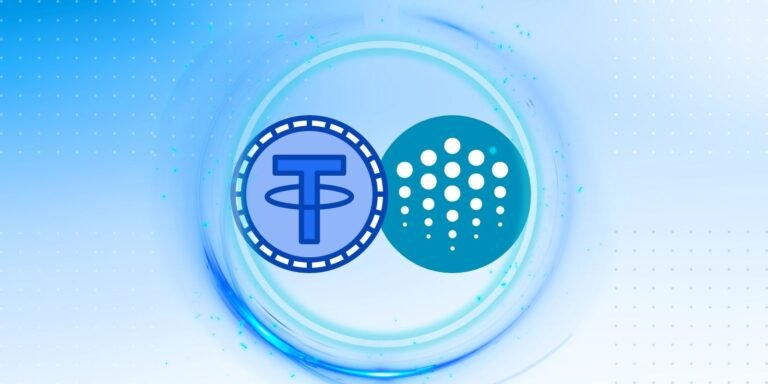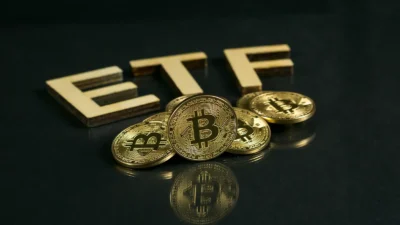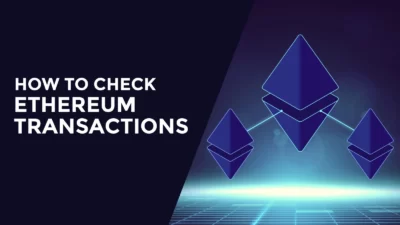Table of Contents
Toggle- What Is Ocean Protocol (OCEAN)?
- What Is Tether (USDT)?
- Ocean Protocol vs Tether: Pros & Cons
- Market Performance of Ocean Protocol (OCEAN) and Tether (USDT)
- Summary of Advantages & Disadvantages of Ocean Protocol (OCEAN) and Tether (USDT)
- The Finer Details: Fees, Features, Security & Mining
- Can you Convert Ocean Protocol to USDT?
- Conclusion
Ocean Protocol vs Tether! You’re surely familiar with cryptocurrency, and chances are you’ve heard of both Ocean Protocol and Tether. But what’s the difference between the two? We’ll take a look at each one individually, then compare their features side by side.
Let’s start with Ocean Protocol. It’s a decentralized data exchange protocol built on blockchain technology that enables secure and private sharing of data, AI, and machine learning services. It incentivizes developers to build innovative solutions on top of its platform.
Tether, on the other hand, is a cryptocurrency token issued on the Bitcoin blockchain through the Omni Layer Protocol. It is designed to enable exchanges to balance their books by providing users with an alternative way to buy digital assets without having to convert fiat currencies into crypto coins.
Now that we have a basic understanding of both Ocean Protocol and Tether, let’s look closer at how they compare to each other in terms of features and performance indicators.
What Is Ocean Protocol (OCEAN)?
At its core, Ocean Protocol (OCEAN) is a blockchain-based data-sharing protocol designed to help individuals and businesses access, use, and exchange data securely and transparently. It works by connecting users and service providers in a secure and trustless manner, making it easier for them to exchange data as well as monetize it.
The platform enables data sharing between trusted parties through public or private smart contracts. Each contract carries the same set of rules, terms, and conditions for both buyers and sellers that are enforced by the Ethereum protocol. The rules are easy to understand, as they are written in natural language—making it easy for both parties to understand their obligations and rights.
The OCEAN protocol also helps protect users’ personal data while they’re trading on the network. Its privacy mechanisms ensure that no one can access or misuse your personal information without your explicit permission. This makes OCEAN a great option for those looking for a secure way to access, protect, trade, and monetize their data.
What Is Tether (USDT)?
Tether (USDT) is a cryptocurrency that’s designed for use in markets and platforms which have traditionally used fiat currencies. It’s a stablecoin, meaning that it’s pegged to the US Dollar—one USDT is always equal to one USD. In other words, it’s a crypto that holds its value even when the crypto market is volatile.
This makes it ideal for day-to-day transactions and trading activities because users don’t need to worry about large price swings or having their money lose its value. Tether (USDT) also has low fees and is accepted on popular exchanges around the world, making it an attractive option for those who want to buy Tether in Dubai and don’t want to deal with traditional banks or fiat currencies.
Unlike Ocean Protocol (OCEAN), Tether (USDT) isn’t focused on providing solutions for businesses and developers, though many companies do accept USDT payments. Instead, its primary focus is on providing a stablecoin option for everyday users who want to store and transfer their funds without worrying about price fluctuations.
Ocean Protocol vs Tether: Pros & Cons
When it comes to Ocean Protocol and Tether, there are some key differences you should know about. Both coins are based on blockchain technology, but the main pros and cons are quite different. Let’s take a quick look:
Pros of Ocean Protocol (OCEAN)
- Built on Ethereum – Ocean Protocol is built on Ethereum, one of the largest and most secure blockchain networks in existence—providing fast transactions and reliable security.
- Decentralized Data Marketplace – Ocean Protocol lets individuals and organizations trade data safely inside a decentralized data marketplace, meaning users have access to secure and trusted data sources.
- Highly Customizable Software Development Kits (SDKs) – With Ocean Protocol, developers can create SDKs that are highly customizable to meet their individual needs. This allows developers to quickly build applications tailored to their specific use cases and needs.
Cons of Tether (USDT)
- Lack of Transparency – Despite its popularity, there’s little transparency surrounding the circulating supply of Tether. Consequently, many users can’t confirm whether or not Tether is adequately backed by US Dollars held in reserve or other assets.
- Centralization – Tether is a centralized blockchain asset, so it cannot be used as a currency outside of an exchange—making it unsuitable for making international payments in real-time without paying extra transfer fees.
- Poor scalability – As a result of its centralized nature, Tether has poor scalability—meaning it takes longer for transactions to be processed than with many other digital currencies such as Bitcoin or Litecoin.
Market Performance of Ocean Protocol (OCEAN) and Tether (USDT)
It’s no wonder that people are so interested in the performance of Ocean Protocol (OCEAN) and Tether (USDT)—the cryptocurrency market can be a wild rollercoaster.
Let’s dive a bit deeper into how these two digital assets have performed over the past year.
OCEAN Performance
OCEAN has had an impressive run since it was first introduced to the market in April 2020. It has seen strong growth, with a low of 0.10 USD in April 2020 and a peak of 0.86 USD in May 2021 — that’s an increase of 760%. Its price has been consistently higher than when it was first introduced, and its volume is increasing over time, which lends support to bullish sentiment.
USDT Performance
USDT has also seen strong growth since launching in October 2014, but it hasn’t been as dramatic as OCEAN’s growth. Its low was around 0.50 USD and its high was 1.04 USD — that’s an increase of 108%. However, its growth has been steady and consistent over time, signaling a level of investor confidence in the world’s most used stablecoin, that’s why people prefer to buy and sell USDT to date.
Summary of Advantages & Disadvantages of Ocean Protocol (OCEAN) and Tether (USDT)
So let’s move on to a summary of Ocean Protocol (OCEAN) and Tether (USDT) overall:
Ocean Protocol (OCEAN) Advantages
- The decentralized global market for data exchange
- Verifiability of data through blockchain technology
- Secure and private networks for data access and sharing
- Rapid settlement of transactions with no middlemen required
- Tokenization of data assets for trade or ownership
- Low transaction fees compared to traditional payment methods
Ocean Protocol (OCEAN) Disadvantages
- Lack of real-world use cases as the platform is still in the early development stages
- High volatility leading to potential market losses
Tether (USDT) Advantages
- Well established with a large customer base and usage due to its close association with the USD currency
- Protection from the volatility of other cryptocurrencies thanks to its dollar peg
- High liquidity thanks to its frequent use within the cryptocurrency trading environment
Tether (USDT) Disadvantages
– Some controversy regarding lack of transparency regarding USD reserves backing the coin value
– Traction has been slowing down since its peak in 2018
The Finer Details: Fees, Features, Security & Mining
When it comes to Ocean Protocol (OCEAN) vs Tether (USDT), there are some finer details that you need to be aware of. Here’s what you need to know about fees, features, security, and mining for the two.
Fees
When it comes to fees, Tether (USDT) has a much lower fee structure than Ocean Protocol (OCEAN). USDT transactions cost about 0.25% in terms of transaction fees, while OCEAN transactions cost between 0.5%-2%.
Features
In terms of features, OCEAN is supported by a range of applications, including decentralized exchanges, while USDT is only supported by centralized exchanges. Additionally, OCEAN also supports smart contracts and tokenized assets on its network.
Security
When it comes to security both cryptocurrencies offer strong security measures—the main difference being that USDT is centralized while OCEAN is decentralized. As such, USDT has more control over its network while OCEAN relies on consensus mechanisms like Proof-of-Stake to secure its network.
Mining
Finally, when it comes to mining both cryptocurrencies have different approaches—USDT tokens are created by “printing” them out of thin air and not through any mining process whatsoever. Meanwhile with OCEAN tokens are created by staking coins and then validating cryptocurrency transactions on its network in order to create new coins.
Can you Convert Ocean Protocol to USDT?
The last difference between Ocean Protocol (OCEAN) and Tether (USDT) you should know is whether you can convert them to each other. The answer, unfortunately, is not straightforward.
First, let’s look at the option of converting OCEAN to USDT. Depending on your platform, you may be able to convert directly from OCEAN to USDT via a swap or via an exchange. Swapping will require liquidity that may or may not be available at any given time and exchanges may require additional fees if they offer the conversion option, so it’s best to check with your platform first before attempting this type of conversion.
USDT can be swapped or exchanged for OCEAN, but the same caveat applies – liquidity must be available and exchanges will charge additional fees if they offer the conversion option.
In terms of cost-effectiveness and convenience, it’s probably best to keep both assets in their original form. That way, no additional costs,s and fees are incurred when trading on an exchange or swapping them for another asset.
Conclusion
As the blockchain space continues to evolve, projects like Ocean Protocol and Tether are poised to have a significant impact on the industry. While the two projects have many similarities, their core differences are clear. Ocean Protocol is focused on data sharing, while Tether is focused on stablecoin technology.
No matter what the application, both projects offer valuable advantages to their respective users. Ocean Protocol provides users with a secure, decentralized platform for data sharing, while Tether allows users to use a stablecoin that holds its value over time. Whether you’re looking to share data securely or make more efficient payments, the choice between Ocean Protocol and Tether ultimately depends on your individual needs.








